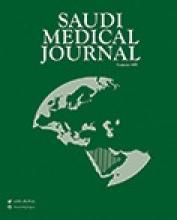Abstract
OBJECTIVE: The objectives of this study are to determine the prevalences of Helicobacter pylori (H.pylori) infection in symptomatic, but endoscopically normal patients as well as in patients with endoscopically and histologically proven esophagitis, gastritis, duodenitis, duodenal ulcer, and gastric ulcer.
METHODS: The study extended over the period November 1999 through June 2000. Biopsy specimens were harvested from intact areas of gastric antral mucosa, duodenal bulb, gastric body and lower third of esophagus of each one of 200 patients undergoing eseophago-gastro-duodenoscopy in endoscopy unit of Tikrit General Hospital (TGH), Salahuddin Governorate, Tikrit City, Iraq. The biopsies were submitted for histopathological, cultural and biochemical investigations. Seven biopsy samples were taken from each patient. Written consent was taken from each patient. The patients were pooled from various districts of the governorate.
RESULTS: Helicobacter pylori was detected in antral biopsies of the following categories of patients: in 73.9% of patients with endoscopic gastritis, in 75% of patients with gastric ulcers, in 86% of patients with endoscopic duodenitis, in 88.6% of patients with duodenal ulcers and in 57.7% of patients with endoscopic esophagitis, but absent in all patients with totally normal endoscopies.
CONCLUSION: Although H.pylori has no role in the development of esophagitis, it is a prevalent pathogen and is associated with many gastro-intestinal diseases and has an important role in the pathogenesis of peptic ulcer disease and gastritis in our district.
- Copyright: © Saudi Medical Journal
This is an open-access article distributed under the terms of the Creative Commons Attribution-Noncommercial License (CC BY-NC), which permits unrestricted use, distribution, and reproduction in any medium, provided the original work is properly cited.






